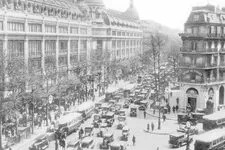A History of Printemps Haussmann
Don't miss out on our unusual Printemps Haussmann tour. Explore its history, architecture, and secrets.
Updated on

Eric RENAUD
The birth of a department store
Change of management and pursuit of big ambitions
Le Printemps today


